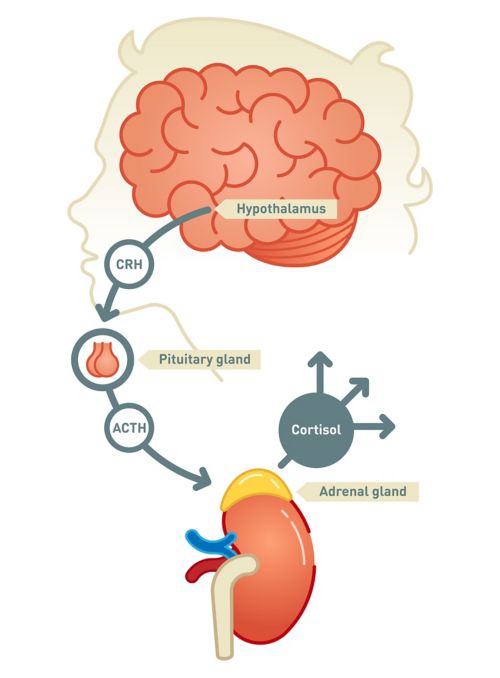Menu
Close
Back
Welcome to
Together is a new resource for anyone affected by pediatric cancer - patients and their parents, family members, and friends.
Learn MoreThe congenital adrenal hyperplasia (CAH) stimulation test shows how well your child’s adrenal glands produce hormones. Hormones are substances made by the body that affect many body functions.
The adrenal glands, located just above the kidneys, respond to a hormone known as adrenocorticotropic hormone (ACTH), which causes them to release more hormones. ACTH comes from a small gland near the brain called the pituitary.
Your child can eat and drink as usual before the test. Give your child their usual medicine(s) on the morning of the test unless the care team tells you not to do so.
Have your child wear comfortable clothes. Bring activities such as books, games, or tablets that they can use during the test.

A part of the brain called the hypothalamus releases a hormone called CRH. This hormone makes the pituitary gland near the brain release another hormone, called ACTH. ACTH makes the adrenal glands release hormones such as cortisol, which affect body functions.
CAH may be found during routine screening tests that check newborns for disease. More testing may be needed to see if they have a problem that is passed down (inherited) from their parents that causes CAH.
Children with CAH may have changes to their genes (DNA). These changes affect how well their bodies make hormones. Their hormones may not work as they should, so they may have problems with:
The disorder has 2 main types: classic CAH and nonclassic CAH.
You can stay with your child during the test. Before the test, the care team will place an IV in your child’s arm.
Your child should not have any side effects from the test.
Your child can return to normal activities after the test.
A congenital adrenal hyperplasia (CAH) stimulation test measures how well the body’s adrenal glands work to produce hormones.
—
Reviewed: August 2023